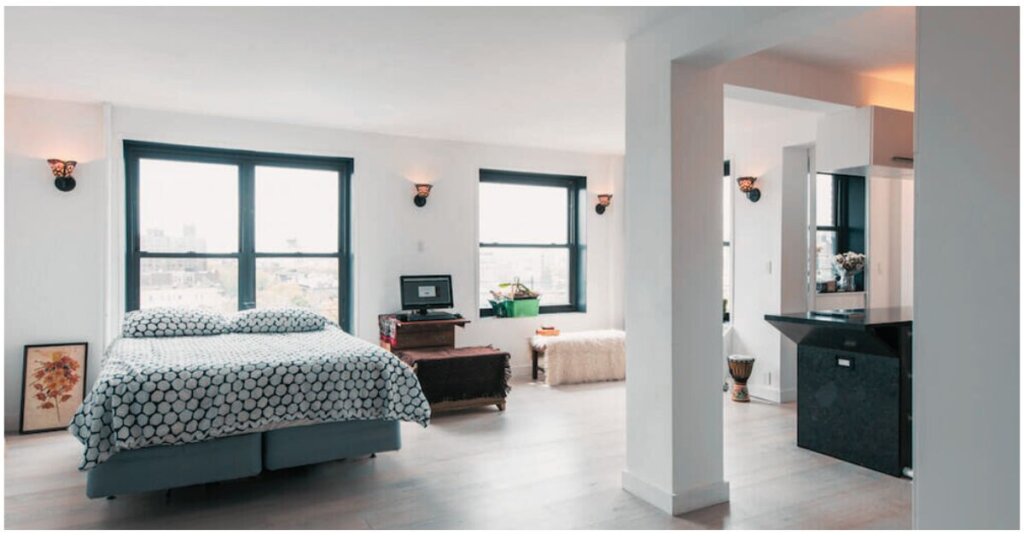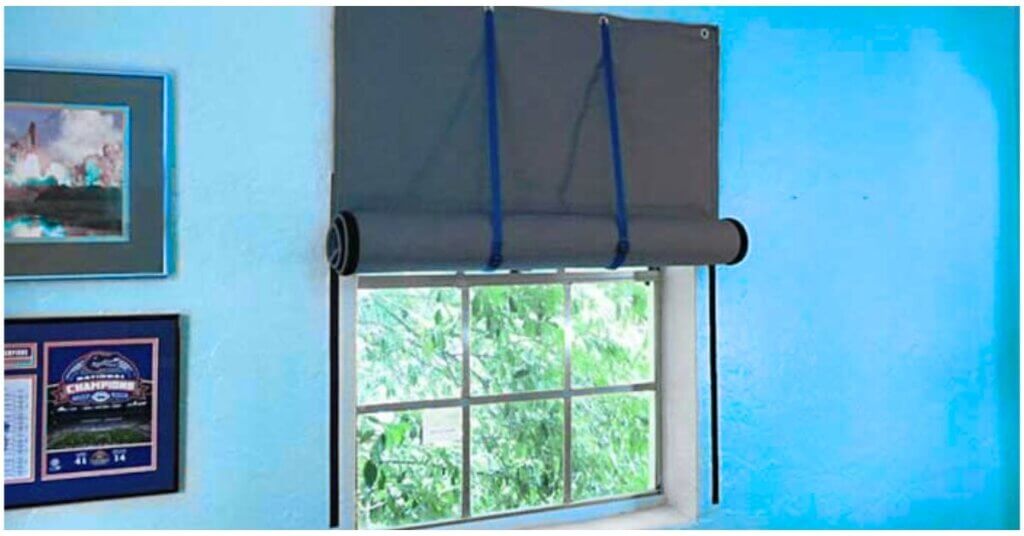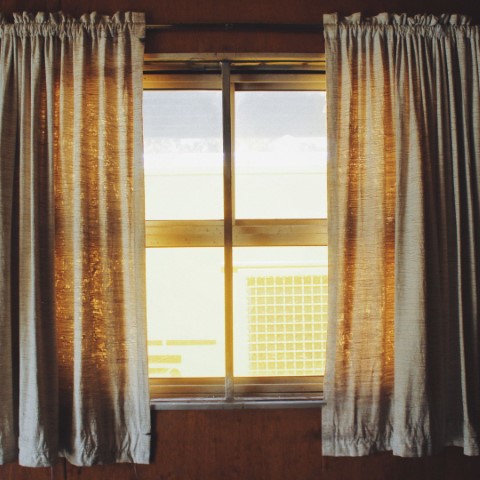Welcome to our guide on How To Soundproof A Bedroom From Outside Noise. Living in a busy city or a densely populated area can be challenging when it comes to ensuring a peaceful and quiet sleeping environment.
Constant noise from traffic neighbors and other external sources can make it difficult to get a good night’s rest. However, with the right tools and techniques it is possible to soundproof a bedroom and create a sanctuary of peace.
How To Soundproof A Bedroom From Outside Noise 5 Easy ways
- Soundproofing the Walls
- Soundproofing the Floor
- Soundproofing the Windows
- Soundproofing the Door
- DIY Soundproofing Solutions
In this guide we will explore various methods for soundproofing a bedroom including the use of soundproofing materials sealing gaps and cracks and implementing acoustic panels.
this guide will help you create a soundproof bedroom that will help you achieve a night of better sleep.

1. Soundproofing the Walls
Soundproofing the walls in your home can be a great way to reduce noise pollution and create a more peaceful living environment. Whether you live in a busy city near a busy street or have noisy neighbors soundproofing your walls can make a big difference in the quality of your sleep and overall well-being.
One of the most common methods for soundproofing walls is by adding insulation. Insulation is a great way to reduce noise pollution because it helps to absorb sound waves preventing them from passing through the walls.
Several types of insulation materials can be used including fiberglass cellulose and Rockwool. Each of these materials has its own set of pros and cons and the best one for you will depend on your specific needs and budget.
Another popular method for soundproofing walls is by using acoustic panels. Acoustic panels are designed to absorb sound waves making them a great choice for reducing noise pollution in your home.
They are typically made from foam or other sound-absorbing materials and can be mounted on your walls to help reduce noise levels. Another effective method for soundproofing walls is by using soundproofing paint.
This type of paint is specially formulated to absorb sound waves, and it can be used on both interior and exterior walls. It is a great option for those looking for a more affordable solution, and it can be easily applied with a brush or roller.
Read also: How to Soundproof a Terraced House?
Lastly, you can use a combination of soundproofing materials to achieve the best results. For example, you can use insulation in your walls and ceiling, and then add acoustic panels to your walls to help reduce the amount of noise passing through.
In conclusion, soundproofing the walls of your home can be a great way to reduce noise pollution and create a more peaceful living environment.
Whether you use insulation, acoustic panels, soundproof paint, or a combination of materials, you can be sure that you will be able to reduce the amount of noise passing through your walls.
Remember, it is essential to research the available options carefully and choose the best solution for your needs, budget, and personal preferences. With the right soundproofing measures in place, you will be able to enjoy a more peaceful, quiet living environment. [How To Soundproof A Bedroom From Outside Noise]
2. Soundproofing the Floor
Soundproofing the floor of your home is an important step in creating a peaceful and quiet living space. we will explore various methods for soundproofing the floor, including the use of soundproofing materials, sealing gaps and cracks, and implementing acoustic panels.
These materials can be applied to the floor to help reduce the amount of sound that enters your home. Some popular soundproofing materials for the floor include rubber matting, cork tiles, and acoustic foam. These materials are designed to absorb sound and reduce its transmission through the floor.
Another way to soundproof the floor is to seal any gaps or cracks in the floor. These gaps and cracks can allow sound to enter your home, so it’s important to seal them to prevent noise from entering your home.
You can use a sealant or caulking to fill in any gaps or cracks in the floor. This will help to prevent sound from entering your home through the floor.
Read also: How Do You Know If An Apartment is Well Soundproofed?
Acoustic panels are also a great option for soundproofing the floor. These panels can be installed on the floor to help reduce the amount of sound that enters your home. Acoustic panels are designed to absorb sound, which can help to create a more peaceful and quiet living space.
By using soundproofing materials, sealing gaps and cracks, and implementing acoustic panels, you can create a soundproof floor that will help you achieve better sleep. [How To Soundproof A Bedroom From Outside Noise]
3. Soundproofing the Windows
A soundproofing window is an essential step in creating a peaceful and quiet sleeping environment. Windows are often the weakest point in a room’s soundproofing, as they are the most likely point of entry for outside noise.

One of the most popular methods is to use soundproofing materials such as weather stripping, door sweeps, and acoustic caulk. These materials can be applied to the perimeter of the window to create a barrier that reduces the amount of noise that enters the room.
Another effective method for soundproofing windows is to seal gaps and cracks. These gaps and cracks can be found around the window frame and can be sealed with caulking or expanding foam. This will prevent noise from entering the room through these small openings.
Acoustic panels are another popular method for soundproofing windows. These panels are designed to absorb sound and can be applied to the window itself or the walls surrounding the window. They can also be used in combination with other soundproofing materials to create a multi-layered soundproofing solution.
In addition to these methods, there are also specialized window inserts that can be installed on the inside of the window to create a barrier between the window and the room. These inserts are designed to block out outside noise and can be made of materials such as glass, plastic, or metal.
Read also: How To Soundproof Baby Room Apartment
Soundproofing windows can be a bit of an investment, but it’s worth it to create a peaceful and quiet sleeping environment. With the right tools and techniques, it is possible to greatly reduce the amount of noise that enters a room through the windows.
So, whether you’re a light sleeper, shift worker, or just need some peace, soundproofing your windows is a great way to improve the quality of your sleep. [How To Soundproof A Bedroom From Outside Noise]
4. Soundproofing the Door
Doors are one of the most common sources of noise leaks in a bedroom, and they can be a major contributor to outside noise entering the room. Whether it’s traffic noise, neighbors talking, or even pets barking, a poorly soundproofed door can make it difficult to get a good night’s sleep.
There are several methods for soundproofing a door, and the best option will depend on your specific needs and budget. One of the most affordable and effective methods is to install a door sweep or weatherstrip. They are easy to install and can be found at most home improvement stores.
Another option for soundproofing a door is to add a layer of soundproofing material to the door itself. This can be done by attaching a soundproofing panel or mat to the door, or by using soundproofing paint. These materials will help to absorb sound, reducing the amount of noise that enters the room.
For even more effective soundproofing, you can install a solid core door. These doors are made of solid wood or a composite material, and they provide a much higher level of sound insulation than a standard hollow core door. While they are more expensive than other options, they will provide the best results in terms of blocking outside noise.
In addition to soundproofing the door itself, it’s also important to address any gaps or cracks around the door frame. These areas can also act as noise leaks, and they can be sealed with caulking or foam sealant. Ultimately, soundproofing a door is an important step in creating a peaceful and quiet sleeping environment. [How To Soundproof A Bedroom From Outside Noise]
5. DIY Soundproofing Solutions
Several DIY soundproofing solutions can help to reduce outside noise in a bedroom. These solutions are affordable easy to implement, and can provide a noticeable difference in the overall sound level in the room.
- Weatherstripping and door sweep: Installing weatherstripping or door sweeps can help to seal gaps between the door and the threshold, preventing noise from entering the room. These can be found at most home improvement stores and are easy to install.
- Acoustic panels: Acoustic panels can be used to absorb sound and reduce echo in a room. These can be made by attaching soundproofing material to foam boards and hanging them on the walls.
- Soundproofing curtains: Heavy curtains or drapes can help to absorb sound, reducing the amount of noise entering the room. This is especially effective for windows, which are often a major source of outside noise.
- Soundproofing paint: Soundproofing paint can be used to coat walls, floors, and ceilings, which will help to absorb sound and reduce noise transmission.
- Mass-loaded vinyl: This is a heavy material that can be used to line walls or cover doors, which will help to block sound transmission.
- Caulking or foam sealant: Sealing gaps and cracks around doors, windows, and electrical outlets will help to prevent noise from entering the room.
These DIY soundproofing solutions can be effective in reducing outside noise in a bedroom but they may not be as effective as professional soundproofing methods. However, they are an affordable and easy way to improve the sound environment in a room.
Conclusion
Soundproof A Bedroom From Outside Noise is crucial for ensuring a peaceful and comfortable sleeping environment. such as installing soundproof windows and doors, adding insulation to walls and ceilings, and using noise-canceling curtains and rugs.
Additionally, incorporating sound-absorbing materials, such as acoustic panels and soundproofing foam, can help to reduce echo and reverberation within the room. While soundproofing can be a significant investment, it is ultimately worth it for the improved quality of life and restful sleep it can provide.
FAQs: How To Soundproof A Bedroom From Outside Noise
How do I stop noise coming through walls?
There are several ways to reduce noise coming through walls. The most effective way is to add insulation between the walls such as dense fiberglass insulation. This will help to absorb sound waves and reduce the amount of noise coming through the walls. Other solutions include adding thicker curtains weatherstripping doors and windows and sealing any cracks or gaps in the walls.
How can I soundproof my bedroom from traffic noise?
There are several ways to soundproof your bedroom from traffic noise including installing thicker windows adding insulation to the walls using acoustic ceiling tiles using window treatment and using soundproofing materials.
How to Soundproof a Bedroom from Outside Noise
The best way to Soundproof a Bedroom from outside noise is to use insulation and soundproofing materials. You can use acoustic foam sound-absorbing panels acoustic drapes and heavy curtains to absorb sound and block it from entering the room


6 thoughts on “Top 5 Easy Ways How To Soundproof A Bedroom From Outside Noise”